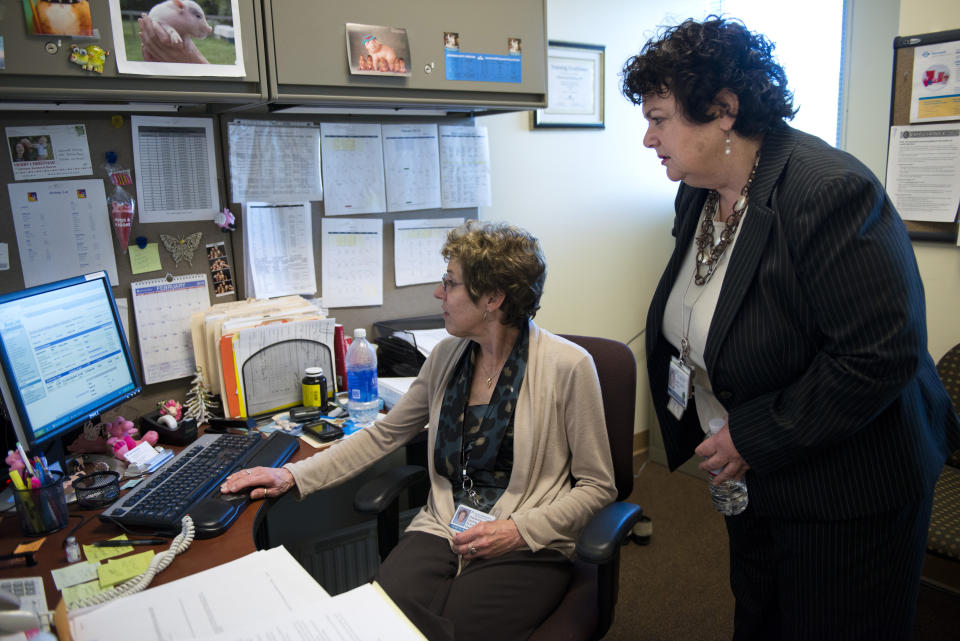How to supercharge your retirement savings in 2020
As 2020 takes hold, about half of Americans say they’re committed to saving more for retirement this year, according to a recent Fidelity survey.
That’s good news because many are woefully behind. In fact, more than 1 in 2 Americans admit they’re not saving enough, and 38 percent say they still don’t have a retirement account.
Experts applaud the renewed enthusiasm for saving and offer important tips for getting on track to a more secure retirement, no matter where you are financially.
Be proactive.
“We are seeing millennials joining 401(k) plans at greater levels,” said Dave Stinnett, principal of Vanguard’s strategic retirement consulting group. “But it’s not as much of an intentional thing.”
More companies are automatically enrolling new employees in their 401(k) plans, helping to increase participation levels. But workers are forgetting to check on their progress and increase their contributions.

“People are having professionals manage their money, and so they feel less inclined to go in and check their account,” said Anne Lester, head of retirement solutions at JPMorgan Asset Management.
But it’s important to know what’s going on in your account and if you’re invested in low-fee funds. Otherwise, you could have management fees eating away at your return.
Can’t maximize your 401(k)? It’s okay.
The ideal is to maximize your 401(k) contributions and save 15% of your income. But that’s a tough ask for younger employees who may have other financial obligations that take priority, such as paying off student loans.
Don’t let that discourage you. You can start out small and then gradually increase your contributions. If anything, try putting away enough to get your company’s match, if one is offered. With each raise, increase your contribution by 1 percent.
Earlier is better.
Starting to save as early as possible is key because you reap the benefits of compound interest. “If you miss out on your 20s,” Stinnett said, “it will really hurt you when you retire.”

Say your employer fully matches your contributions up to 3 percent of your salary each year. If you make $50,000 at age 25 and contribute 5 percent, you’ll save $638,981 with the company match by the time you hit 65 – given a 6-percent annual rate of return.
But if you don’t start contributing until five years later at 30, you’ll only save $460,092 in the same period, a difference of $178,889.
Open another account.
Another way to supercharge your retirement savings is to contribute to a Roth IRA, which is funded by post-tax dollars. Use your tax refund or year-end bonus to start this account.
If your income exceeds the maximum income limits for Roth IRAs, consider a traditional IRA instead. These offer better tax benefits for those in higher tax brackets.
Instead of funding a Roth IRA with post-taxes now – at a higher tax rate – you pay taxes on withdrawals from traditional IRAs in retirement, when your tax bracket is likely lower, said Brandon Renfro, a finance professor at East Texas Baptist University.
“Just to push taxes away until later,” he said.

Make it automatic.
To make retirement saving even easier, you can automate contributions to a Roth IRA in the same way as your company deducts your 401(k) contributions. Simply direct deposit part of your paycheck into your Roth IRA as well as your bank account each pay period.
Time your contributions.
If your company offers a 401(k) match, find out how your employer deposits that match. If it’s on a paycheck-to-paycheck basis, you could be missing out on the full match.
That’s because if you max out your contributions early – say by June – then your employer doesn’t have any contributions from you to match against for the paychecks after that.
“You definitely don’t want to front load so quickly,” Renfro said. “That match is what makes the 401(k) such a big plan. It’s kind of a cliche, but that’s free money.”
Your match is safe if your company matches in a lump sum once a year.

Know how the law has changed.
If you’re in line to inherit an IRA from your parents, know how new legislation will impact you.
Under the SECURE Act, those who inherit traditional IRAs as non-spouse beneficiaries have only 10 years to take all required minimum distributions from the plan. Before, these non-spouse beneficiaries could take smaller distributions based on their life expectancy and watch the remaining funds grow more.
This also means higher taxes for you.
“If you’re inheriting an IRA in your 40s and 50s from your parents, those are your high-earning years,” said Kevin Busque, CEO of Guideline, a 401(k) provider. “You’re going to be paying a larger tax rate, since they’re forcing you to take it out over those years.”
Don’t get attached.
When it comes to inherited investments from loved ones, don’t let your heart guide you. Sometimes, it’s better to sell off those assets, so you can diversify your retirement portfolio, Renfro said. But some people may become so emotionally attached to inherited assets that they hold on to it – to their financial detriment.
“They say: “These were Dad’s stocks so I’m going to own them,’” he said.
Dhara is a writer for Yahoo Finance. Follow her on Twitter @dsinghx.
Read more:
Follow Yahoo Finance on Twitter, Facebook, Instagram, Flipboard, SmartNews, LinkedIn, YouTube, and reddit.

 money
money 